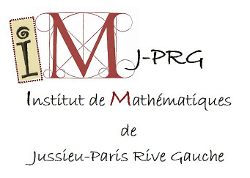| Résume | The Grothendieck-Teichmüller Lie algebra grt was introduced by Drinfeld and is a mysterious object which has many applications in algebra, geometry and topology. An important result by Willwacher identifies grt with the degree zero cohomology of Kontsevich's graph complex, itself an interesting combinatorial object whose cohomology in positive degrees is unknown.
In this talk, we motivate a "higher genus" analogue of this result. More precisely, we discuss how to compute the degree zero cohomology of a generalization of Kontsevich's graph complex, which is assigned to a closed surface S of genus g. We find that it may be expressed in similar terms as grt, and refer to the result as "higher genus Grothendieck-Teichmüller Lie algebras". Additionally, in the case of genus one, we recover Enriquez' elliptic Grothendieck-Teichmüller Lie algebra whose definition is based on categorical considerations.
We aim to sketch the computation and show how it relies on many of the techniques developed in the works of Campos and Willwacher, as well as Idrissi, on configuration spaces of points on surfaces. |

